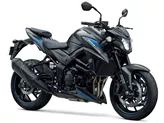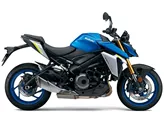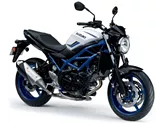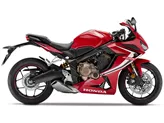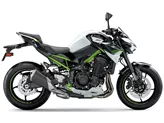Ducati Monster 1100 Evo 2013 vs. Suzuki GSX-S750 2017

Ducati Monster 1100 Evo 2013

Suzuki GSX-S750 2017
Overview - Ducati Monster 1100 Evo 2013 vs Suzuki GSX-S750 2017
The Ducati Monster 1100 Evo 2013 and the Suzuki GSX-S750 2017 are both naked bikes that offer thrilling riding experiences. While they have some similarities in terms of tire width, diameter, and braking system, they also have notable differences in engine power, torque, cooling system, and frame type.
Starting with the engine and drive train, the Ducati Monster 1100 Evo 2013 is equipped with a 2-cylinder engine that delivers 100 horsepower and 103 Nm of torque. On the other hand, the Suzuki GSX-S750 2017 features a 4-cylinder engine that produces 114 horsepower and 81 Nm of torque. This means that the Suzuki has a more powerful engine, providing a greater level of acceleration and top speed.
In terms of cooling, the Ducati Monster 1100 Evo 2013 relies on air cooling, while the Suzuki GSX-S750 2017 utilizes a liquid cooling system. Liquid cooling generally offers better heat dissipation, allowing the engine to operate at more optimal temperatures for improved performance and longevity.

Ducati Monster 1100 Evo 2013
Both bikes have double disk brakes at the front, but the Ducati Monster 1100 Evo 2013 has four-piston calipers, while the Suzuki GSX-S750 2017 has double-piston calipers. This suggests that the Ducati may have slightly better braking performance and control.
Moving on to the chassis, the Ducati Monster 1100 Evo 2013 features a tubular frame, while the Suzuki GSX-S750 2017 has a twin tube frame. The choice of frame type can influence the bike's handling characteristics, with tubular frames often providing a more rigid and responsive feel, while twin tube frames may offer more flexibility and comfort.
In terms of dimensions and weights, both bikes have the same tire width and diameter at the front and rear. They also have a similar wheelbase, with the Suzuki GSX-S750 2017 having a slightly longer wheelbase of 1455 mm compared to the 1450 mm of the Ducati Monster 1100 Evo 2013. The seat height of the Suzuki is also slightly higher at 820 mm, compared to the 810 mm of the Ducati.

Suzuki GSX-S750 2017
In terms of strengths, the Ducati Monster 1100 Evo 2013 is known for its enormous torque and radical manageability, providing a thrilling and responsive riding experience. On the other hand, the Suzuki GSX-S750 2017 boasts a GSX-R 750 engine with a strong character, powerful and well-controlled brakes, harmonious design, affordable price, sharp sound, and great lean angle clearance.
However, both bikes also have their weaknesses. The Ducati Monster 1100 Evo 2013 experiences noticeable load changes, which may affect the overall stability and smoothness of the ride. Additionally, the instruments on the bike may be poorly readable, potentially causing inconvenience for the rider. The Suzuki GSX-S750 2017, on the other hand, has an acute knee angle, which may not be comfortable for riders with longer legs. Additionally, the tachometer on the bike may be difficult to read, potentially causing issues with monitoring engine speed.
In conclusion, while both the Ducati Monster 1100 Evo 2013 and the Suzuki GSX-S750 2017 are powerful naked bikes that offer thrilling rides, they have notable differences in engine power, cooling system, frame type, and dimensions. Each bike has its own strengths and weaknesses, making them suitable for different types of riders and riding preferences.
Technical Specifications Ducati Monster 1100 Evo 2013 compared to Suzuki GSX-S750 2017
Pros and Cons in comparison
Pros and Cons in comparison
Ducati Monster 1100 Evo 2013

It is the modern definition of classic-elegant sportiness.
Suzuki GSX-S750 2017

More power, more performance, more sound. Suzuki also proves all the pessimists regarding the EURO4 standard wrong and delivers the GSX-S 750, a successor to the GSR 750 that has been further developed in every respect and can be a bit more serious, but doesn't have to be. To ensure that aha moments don't become oje moments, ABS and a three-stage traction control that can be switched off provide a safety cushion. With S21 tyres from Bridgestone, the GSX-S is super-sporty, allowing you to take advantage of the generous lean angle clearance. Only the acute knee angle could be a disadvantage on longer tours.
Price Comparison Avarage Market Price Ducati Monster 1100 Evo vs Suzuki GSX-S750
There are a few key differences between a Ducati Monster 1100 Evo 2013 and a Suzuki GSX-S750 2017. It takes less time to sell a Suzuki GSX-S750 with 84 days compared to 92 days for the Ducati Monster 1100 Evo. Since model year 2010 1000PS.de editors have written 5 reviews for the Ducati Monster 1100 Evo and 14 reviews for the Suzuki GSX-S750 since model year 2017. The first review for the Ducati Monster 1100 Evo was published on 5/19/2011 and now has more than 16,000 views. This compares to more than 50,800 views for the first review on Suzuki GSX-S750 published on 10/4/2016.



